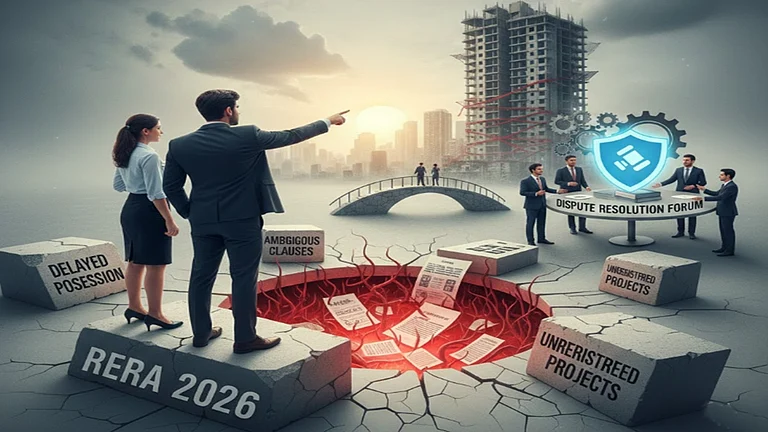When a first-time homebuyer starts from shortlisting properties, they are not just looking at floor plans and fittings. Given the buyer is looking for a house in a metro city the process may involve from tracing metro lines, scanning government tenders, checking RERA registrations, to asking around about water pressure. Nobody wished to wake up five years from the date of purchase and realise their flat was in the middle of nowhere. It's not paranoia. It's due diligence.
Because in real estate, a property's future value is less about the paint on the walls and more about the ground it stands on and how that ground is planned to change.
The question for any homebuyer isn't "Is this flat good?" It's "Will this locality grow?"
The Foundation: Infrastructure
The growth of any locality starts underfoot. Literally, roads, sewage lines, power cables or the lack of them determine how well a neighbourhood will evolve.
Buyers need to look beyond what the builder shows and evaluate what's publicly visible. Are roads paved or crumbling? Is there visible civic work underway, like underground cabling or stormwater drains? Metro lines either operational or under construction are often the biggest growth catalyst.
Check On the Map
In NCR and Mumbai alike, proximity to metro corridors has rewritten the fortunes of entire areas. But not all proximity is created equal. So, buyers must walk the last mile. Literally, it tells you more than any brochure ever will.
What the Master Plan Isn't Telling
Every city's urban development authority publishes a Master Plan, a zoning blueprint for future growth. But many homebuyers never even look at it. That's a mistake. Local planning departments usually have these documents online, though often buried in PDF archives. Look for proposed roads, SEZs, transport hubs. They're the trail markers of future appreciation.
RERA Approval
The Real Estate (Regulation and Development) Act (RERA) is often misunderstood. It's not just about penalising rogue builders, it's about transparency for buyers.
Buyers should cross-check this with the property's registration documents and, if in doubt, file an RTI with the urban authority.
Presence Of Schools, Hospitals, Malls
A single international school nearby isn't a sign of growth. But five schools opening in three years? That's momentum.
Same goes for hospitals, malls, multiplexes. One brand setting up shop is noise. A cluster is a signal.
Urban economists call it "critical mass development" when a certain density of amenities starts to self-reinforce demand. For buyers, this translates into better resale value and livability.
Employment Nodes Are Growth Magnets Even Before They're Built
Areas near job hubs, IT parks, SEZs, industrial corridors tend to appreciate faster and more steadily. But the key is catching the area before the crowd does.
In Bengaluru, areas near Outer Ring Road saw steep jumps after major IT parks were occupied. Smart buyers looked at land acquisition notices, press releases from companies, and even job postings by firms scouting locations.
Environmental Risks
A project may have great amenities, but if it's in a flood zone, that's a dealbreaker. Check for recurring news of waterlogging, air pollution, even garbage disposal issues. These may seem like civic irritants today, but they compound over time and sap property value.
Buyers should check the Central Pollution Control Board's Air Quality Index (AQI) data, review topographical maps for elevation (flood risk), and ask local residents about drainage.
Zoning, Land Titles, Registry Caveats
If a property isn't legally registered, don't touch it no matter how lucrative the price.
Buyers should verify title deeds, past land use, and whether the development is aligned with the local development authority's rules.
Red Flags That Spell Trouble
Stalled projects: Sites where construction has paused for months without explanation
Low RERA compliance: Many unregistered projects in the area
Overbuilding: Too many similar projects, but low occupancy
Unplanned layouts: No defined roads, sewage, or zoning discipline
Legal disputes: Frequent PILs or court notices against projects in the area
These are signs of risk walk away.














